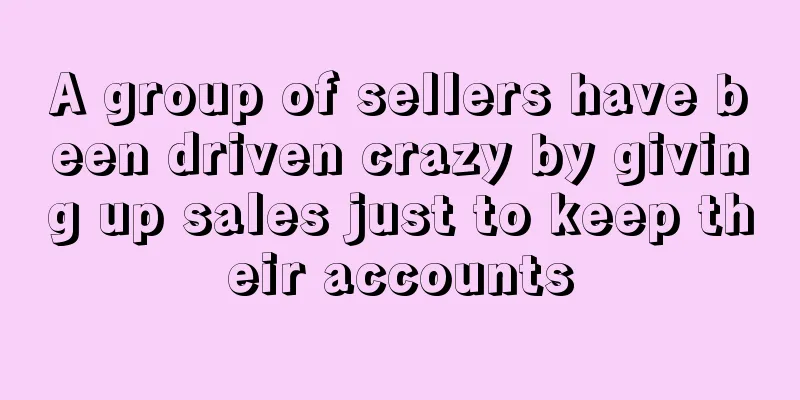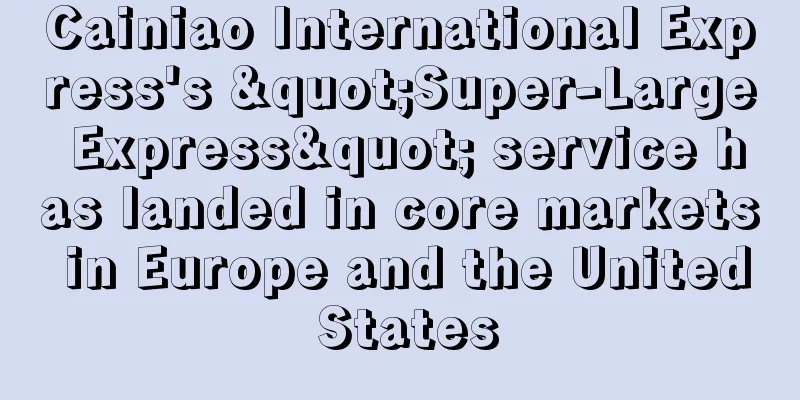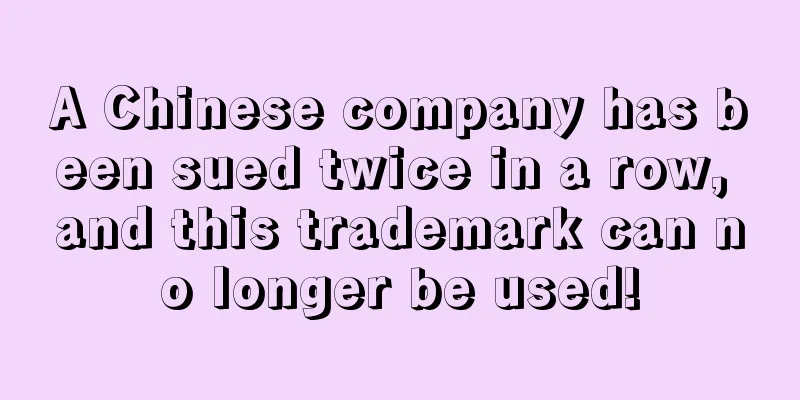Amazon's large-scale number scanning has service providers going crazy

|
In the past two days, many sellers have experienced a black weekend. In the early morning of the 23rd, Amazon raided the accounts again, and many sellers were caught. Service providers in the industry were overwhelmed with orders, and the price of appeals increased several times.
The main reason for the closure of these accounts is brand association, which includes associations caused by brand authorization of their own stores as well as associations with unfamiliar stores. Some accounts that sought brand registration from service providers this year went bankrupt.
In the past two years, Amazon has conducted several brand association sweeps. Last year, a company was shut down due to a mass ban. This ban has once again sounded the alarm for sellers. In the future, one store will correspond to one trademark. How should the sellers who have been affected appeal? Some sellers have given some suggestions.
Amazon's large-scale account scanning is mainly due to brand association
On Saturday morning, Amazon sellers were in an uproar. Many sellers reported that their accounts were suddenly scanned at night, and some sellers had multiple accounts shut down at once:
" 14 accounts died in one night . " "I received an email at 4am saying my store was closed. I was heartbroken because the account that was linked to my store was not mine at all." "Nearly 20 of the 90-plus group members were linked." "Three accounts were scanned due to brand authorization and were linked to a closed store." “Two stores were shut down because they were associated with the brand of a store that was shut down in the second trial.” "The brand association was just restored a few days ago, and now several more have been wiped out. I am really pissed off."
According to sellers’ feedback, the hardest hit area this time is brand-authorized accounts. The most typical case is that brand-registered account A authorized store B. Store B had been shut down for violations before, and this time A was also blocked. But there are also many sellers who are linked to unfamiliar accounts. “ I don’t recognize the store I’m linked to. It’s very likely that it was previously authorized to a service provider to create a zombie link. On Saturday, I saw that the US site was gone, and the entire site was GG as well. ”
Regarding large-scale related events, some sellers consulted service providers, who analyzed that there are mainly two situations:
In addition, some accounts were blocked due to brand abuse. Compared with the previous reasons for account blocking, this time there are two new types: abuse of authorizing multiple accounts and abuse of TM logo.
After learning from multiple sources, a seller whose account was scanned made a more detailed classification of the account blocking situations: associated with an account that is completely unfamiliar; an account that was canceled after brand authorization, and the seller's own secondary account; an account that was authorized by the brand, and the service provider helped to merge zombies and canceled it later; an account that was authorized to his own secondary account, and the account was hung multiple times due to variant warnings, and the authorization can be canceled; an account that was authorized to his own secondary account, and the brand authorization cannot be canceled after the account is hung.
The seller encountered the last situation. He checked his account again and found that it was related to other sites. Therefore, he reminded his peers: If you do not see any emails on the site that is down, but only receive notifications asking you to activate your account, you can check other sites to see if there are any performance emails. Indeed, some sellers said that they did not see any emails and were directly blocked by Amazon.
Service providers' quotations have been rising continuously. How can sellers appeal?
Due to the large number of accounts blocked this time, the service providers are overwhelmed with orders. At the same time, there are overwhelming advertisements for "saving accounts" in the WeChat Moments , with different quotes. One seller asked around and found that the cheapest was 7k and the most expensive was 20k. " The service provider quoted 6000 in the morning, 10k at noon, and now 15k. "
Sellers are extremely anxious, and some companies promise that their accounts can be unblocked 100%. However, some service providers revealed that they may not be able to retrieve the account even if they handle it, but there is a certain probability. If the seller needs it, it is best to find a first-hand service provider to save some time.
Amazon also gave some ideas on how to appeal - save the associated account first and then save the current account. The reason why the seller's account was deactivated was that the seller had a separate account A, which violated one of Amazon's policies, so the platform forcibly deactivated the account.
How to reactivate an account? The seller must first submit an appeal to reactivate the account associated with A; after successfully activating the account, submit an appeal to activate the current account. When submitting an appeal at this step, the seller needs to provide the name and activation date of the reactivated account.
If the seller is not the owner of account A: 1. If the seller once owned the account /was the rights owner but no longer is, supporting documents can be provided to prove that there is no longer any relationship with A, including sales deeds, purchase agreements or business transfer agreements, contract termination, etc. 2. If the seller is unaware of the account, Amazon cannot confirm the seller's ownership of the account and will not restore the account's ownership.
How to appeal and get the store back? According to the experience shared by the sellers who have successfully appealed, you can cancel the brand authorization and then appeal, or delete all the links of the authorized brand and then appeal . Some sellers also shared the solution of associating with unfamiliar accounts, which has a certain probability of unblocking :
1. Contact the Amazon account status team;
Generally speaking, the hardest hit areas for these blocked accounts are those used by multiple stores under one brand. This is not the first time that Amazon has conducted a sweep operation for brand association incidents. An operator said that the previous company had a large number of accounts killed due to brand authorization association, and the company went bankrupt. "In 2016, the previous company had a case where brand authorized accounts were associated and the store was blocked, so later I set up an independent brand for each store and never engaged in brand authorization. The money for trademark registration cannot be saved." said a seller.
Some sellers analyzed that brand association is a weak association, and as long as all accounts under the brand do not violate the rules, everything will be fine. However, if one account has a problem, all accounts will have problems. However, this uncertainty means risk, and once a problem occurs, other accounts will be implicated. The large area of the account suspension this time makes sellers more clearly aware of the importance of "one store, one trademark", and equipping a single store with a trademark will become the mainstream practice in the future. |
<<: The bell is about to ring, and another big seller is on the market!
>>: Shein and Temu are popular in the United States, giving Amazon a headache
Recommend
What is Yicang ERP & Yicang ERP Review
Yicang ERP is a simple and efficient cross-border...
The impact of inflation continues, and prices at US "dollar stores" have also increased!
The discount chain is implementing permanent pric...
U.S. home furnishing sales achieved growth against the trend!
U.S. retail sales growth is slowing from pandemic...
Shipping prices soar! Container shortage continues, many shipping companies raise surcharges
The latest data shows that in the past five month...
What is TrueMoney Wallet? TrueMoney Wallet Review, Features
TrueMoney Wallet is Thailand's leading e-walle...
Many items have over 10,000 reviews! The big sellers in the category are making a lot of money
The pet economy continues to be hot around the wo...
3.16 million+ products, 8.77 million+ users! German e-commerce Industrystock is attracting a lot of attention
It is reported that German B2B e-commerce Industr...
What is GLA Global Project Logistics Network? GLA Global Project Logistics Network Review, Features
GLA Global Project Logistics Network is a website...
Chinese sellers cause the US Trademark Office to "collapse"? The backlog of trademarks has exceeded 900,000!
With the popularity of cross-border e-commerce, i...
Tapestry in the US reaches record growth with 1.5 million new users
Recently, American luxury retailer Tapestry said ...
101% growth! Argentina's e-commerce during the pandemic
According to the latest data released by the Arge...
Parcels are frequently lost at multiple stations and shipping dates are delayed again and again. Sellers complain bitterly: It’s so frustrating!
Since the beginning of this year, sellers have no...
What is Anyfin? Anyfin Review, Features
Anyfin is a Swedish consumer credit assessment se...
What is Finale Inventory? Finale Inventory Review, Features
Finale Inventory is the premier inventory manageme...
What is Coralglobal? Coralglobal Review, Features
Coralglobal (Coral Cross-border Settlement) was es...









